Modern men have a fair share of fashion faux pas, and we’ve previously shown some of the 20th century’s biggest menswear fails. Further back in history, though, there have also been crazy menswear moments, and we’ll look at blunders before the 1900s today!
I think we can all agree that a little modesty is never a mistake. It’s often said that fashion is fickle, but the reality is that fashions evolve – going through innovation after innovation. The quintessential example is probably the suit. Its fundamentals have remained largely the same for 150 years or so, but the details have changed subtly over time.
But, for every positive innovation like the suit that history has given us, it’s also given us plenty of examples where we can simply look back and say, “What was thou thinking?” So, let’s take a light-hearted look at ten of history’s biggest menswear mistakes.
1. Coifs
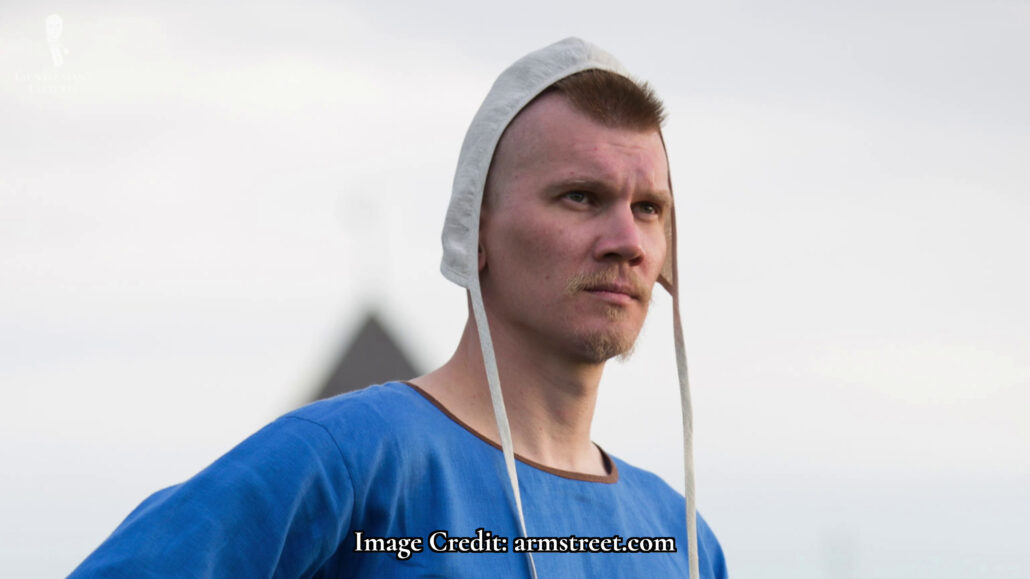
This medieval accessory is a piece of fabric that covers the top and back of the wearer’s head. It can also cover the ears as well, and it uses ties to secure the quaff under the wearer’s chin.
The coif has been around since the 900s, effectively making it a piece of western clothing for over a millennium. That’s right, they still are available to purchase, even though today they’re usually just used for historical reenactment.
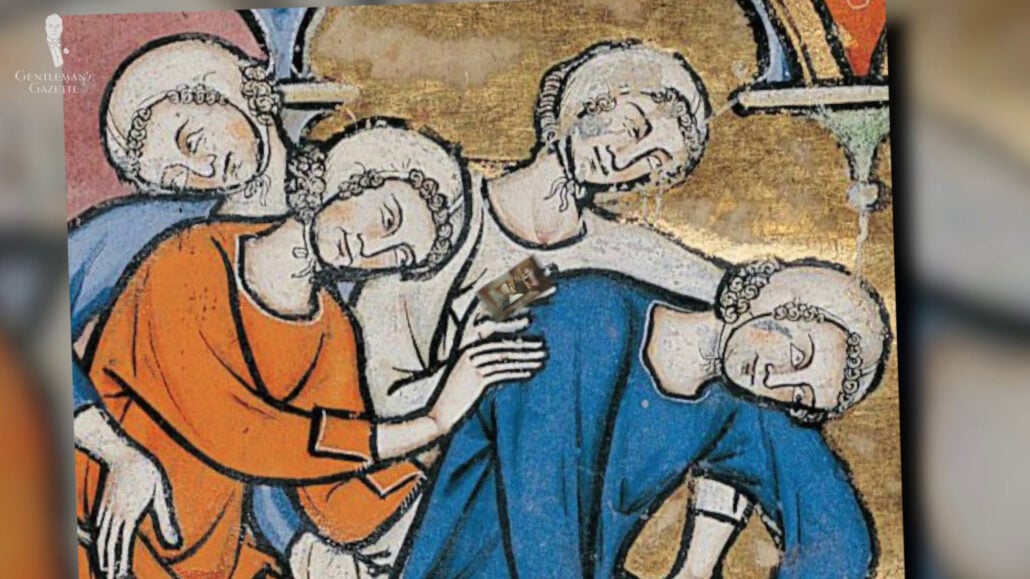
It originated as an item of protection to be worn under a man’s hood or other headwear. Being inexpensive to produce, the coif acts as a barrier so that more expensive or uncomfortable garments wouldn’t be in direct contact with unwashed hair and skin.
So, if you think about it, the coif was really underpants for your head. It could also serve a heavier-duty purpose as well as padded quaffs were worn under chainmail so that sharp metal elements wouldn’t come into direct contact with the head. And much like the foam layer of a bicycle helmet, padded coifs would also protect the wearer from blows to the head during battle, at least to an extent.

What’s fascinating here is just how widespread the coif was during its heyday, being worn by rich and poor alike. The wealthy would wear it under other layers, and the less well-to-do would typically wear it just by itself. And although women and children continued to wear coifs up until the 1700s, men stopped wearing them around the 14th century, and we are certainly glad that they aren’t in a modern man’s wardrobe today.
2. Chaperon
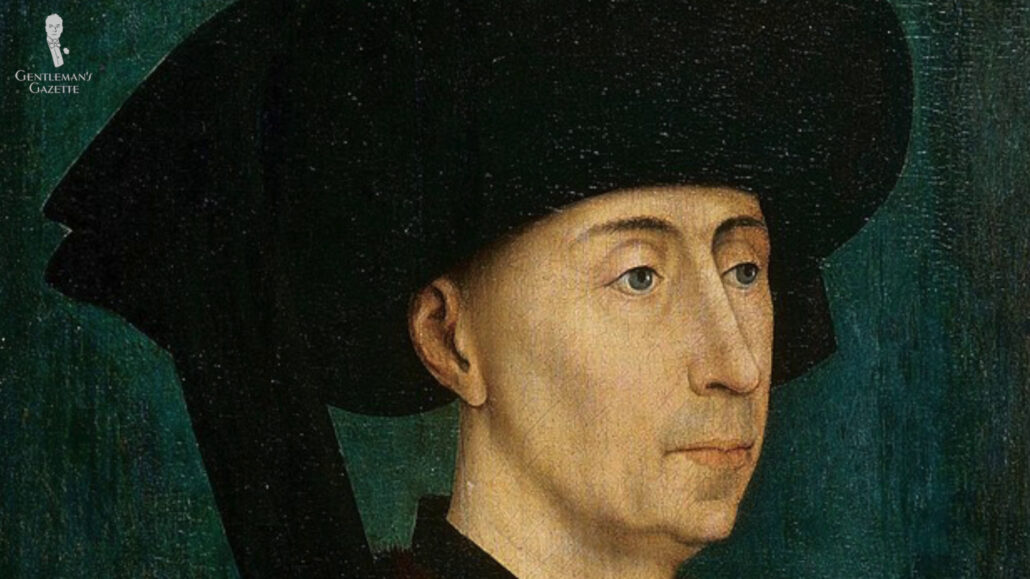
Next on our list is another piece of hilarious headwear, which is the chaperon. This was a type of hat that became popular in the late-15th century and was originally used to denote wealth. This is perhaps a bit ironic, though, as the chaperon stemmed from an earlier trend, mostly done by common folk.
At the time of the chaperon’s creation, one of the most common pieces of outerwear was a hood that would cover the wearer’s head, shoulders, and neck. This meant that a hood could be removed separately from your other outer layers. The problem here was people wanted to remove their hoods indoors but didn’t want to misplace them, so the solution was to take off the hood, roll up the shoulder and neck portion, flip it upside down, and put it back on your head.
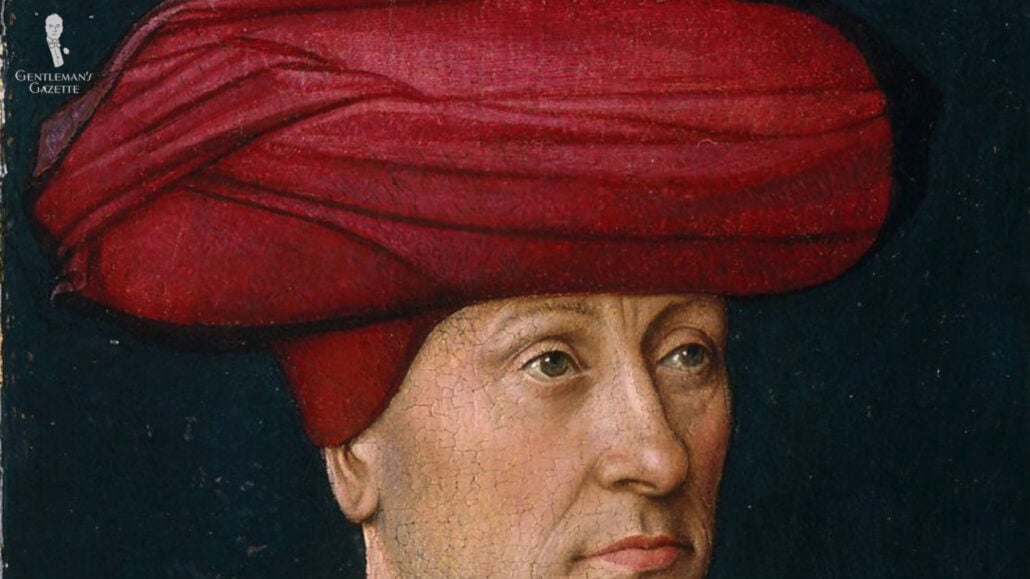
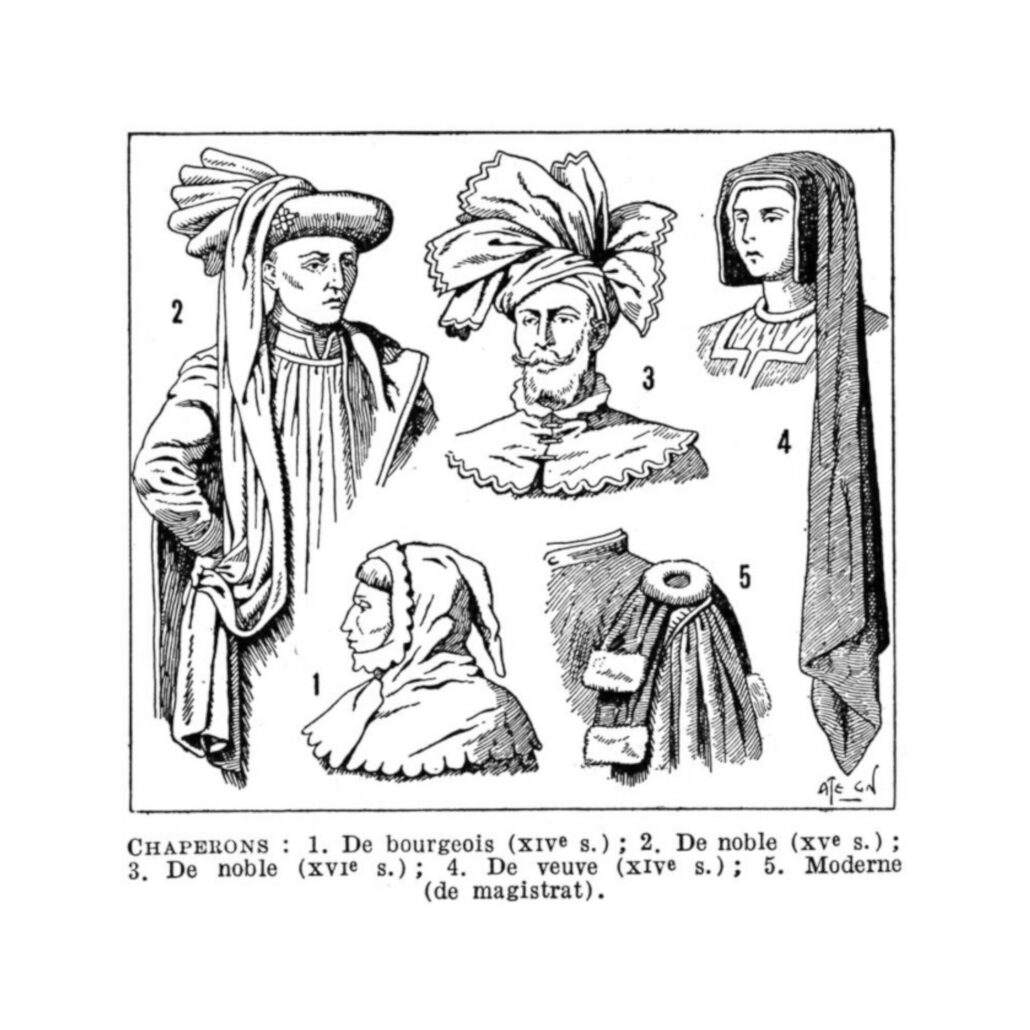
Even though this trend started in taverns and poor houses, it was soon enough adopted by the wealthy as well and could be seen in paintings of the era in various styles. The chaperon quickly became a symbol of opulence and grandeur, similarly to how expensive wristwatches are used today. However fancy these hats were meant to be though, there’s no denying how comical they look. If you don’t just look like someone has dumped a pile of laundry on your head, then you look like you’ve tried to take off your sweater and given up halfway through.
So, let’s take this as one more historical reminder that – then, as now – money can’t buy taste.
3. Super Tight Breeches
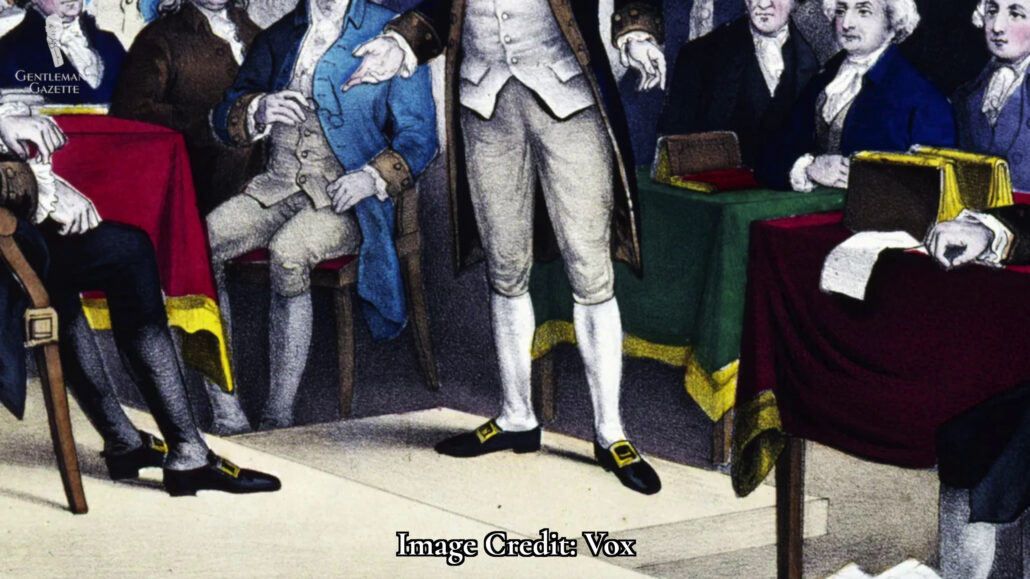
Breeches, also called “britches,” are essentially the forebears of the modern-day trouser. The main difference is their length, as breeches generally stop around the knee and are meant to be fastened tight with buttons, drawstrings, or buckles; and their short length is derived from the fact that they were either worn with tall boots or stockings.
Worn from the 16th century to the early-19th century, breeches were undoubtedly the number-one choice for men before they evolved into the modern-day trouser. And even after adult men moved to wearing trousers, the majority of the time, young boys still hung on to breeches for quite a while, and the ceremony of breeching is when a boy would be given his first pair of long pants to become a man.
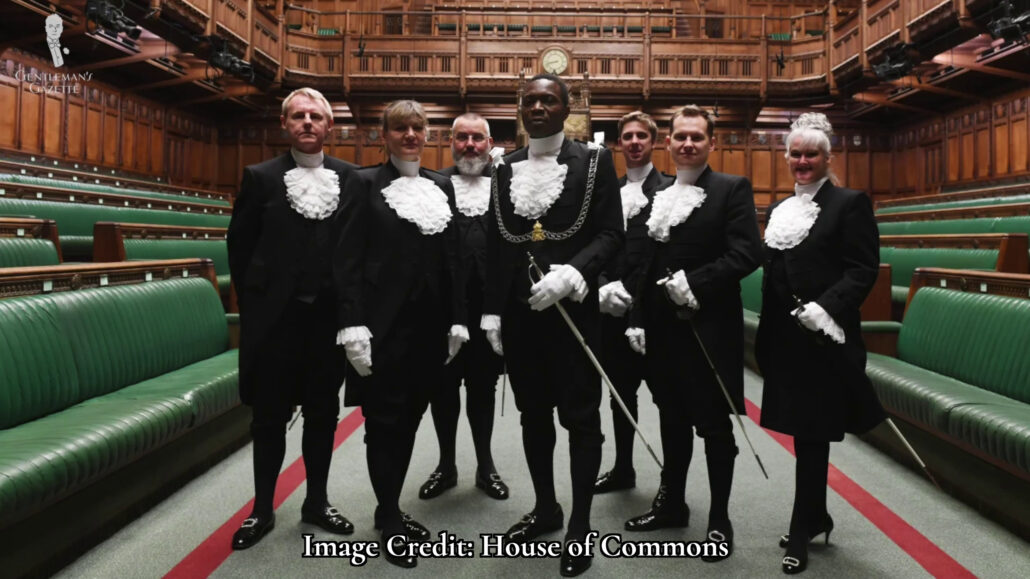
You can still see breeches worn in some traditional ceremonies today, like for court uniforms in Britain. Some were even made with several pieces of billowing fabric, resembling pumpkins, hence the nickname “pumpkin breeches.” And here I thought pumpkin britches was just a nickname that your grandma would give you.
However, the majority of breeches were designed to be worn tight to the leg to show off the wearer’s masculine thighs and calves. This, of course, is an element that has come and gone throughout menswear’s history, with skinny jeans and athleisure leggings taking the place of breaches to some extent in the modern day. But, at least today, we have the advantage of stretchier fibers. I certainly wouldn’t want to put on a pair of leggings made from linen.
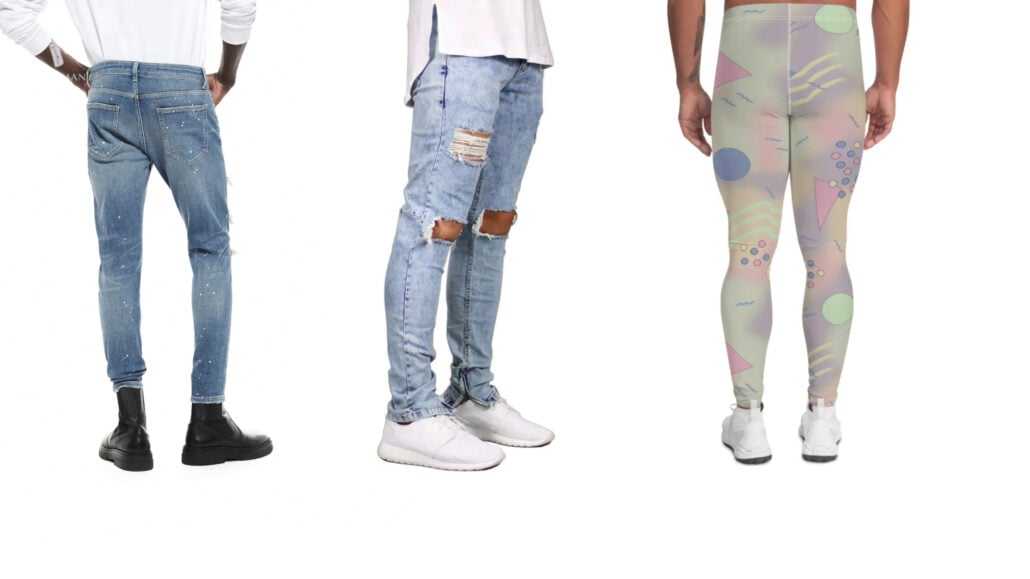
Ultimately, though, I think we can agree that everyone looks better in a pair of well-fitted trousers that attractively show off your silhouette.
4. Stockings/Hose
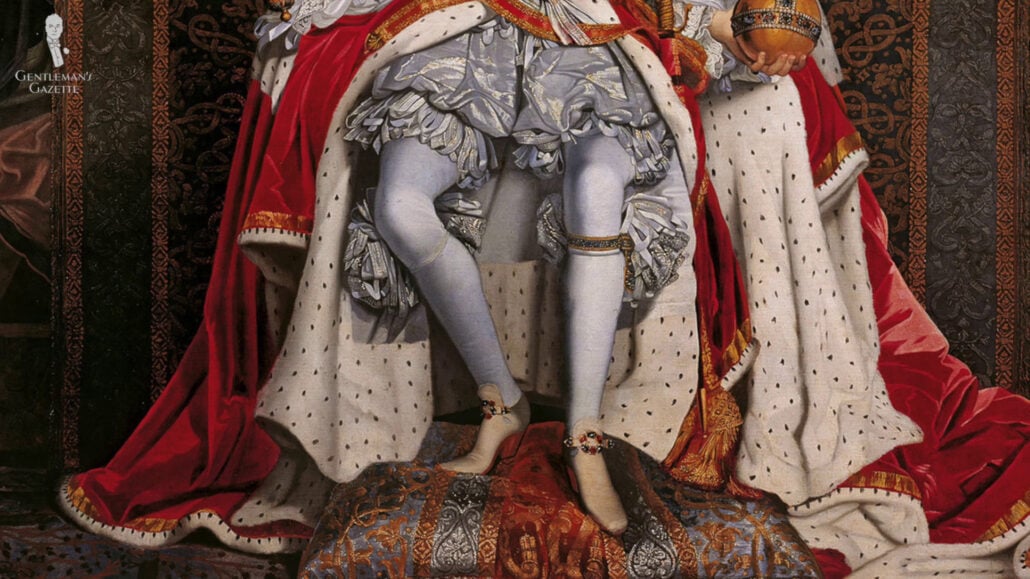
Historically, hoses were tight-fitting, trouser-like garments that covered the lower half of the body from the waist to the feet. They were worn from the Middle Ages all the way up to the 17th century. This, by the way, is why Robin Hood is so famous for wearing them, as his adventures took place during this time period.
Eventually, hoes would be split in two for a short period, becoming upper hose, which extended from the waist to the knees, and nether hose, which would evolve into stockings. As we previously mentioned, upper hose would become breeches, but before this, it was actually the stockings that took precedence as the outer garment. Each leg of the hose was cut separately and was worn up and over the upper hose, which had the side effect of creating an awkward gap in the middle.
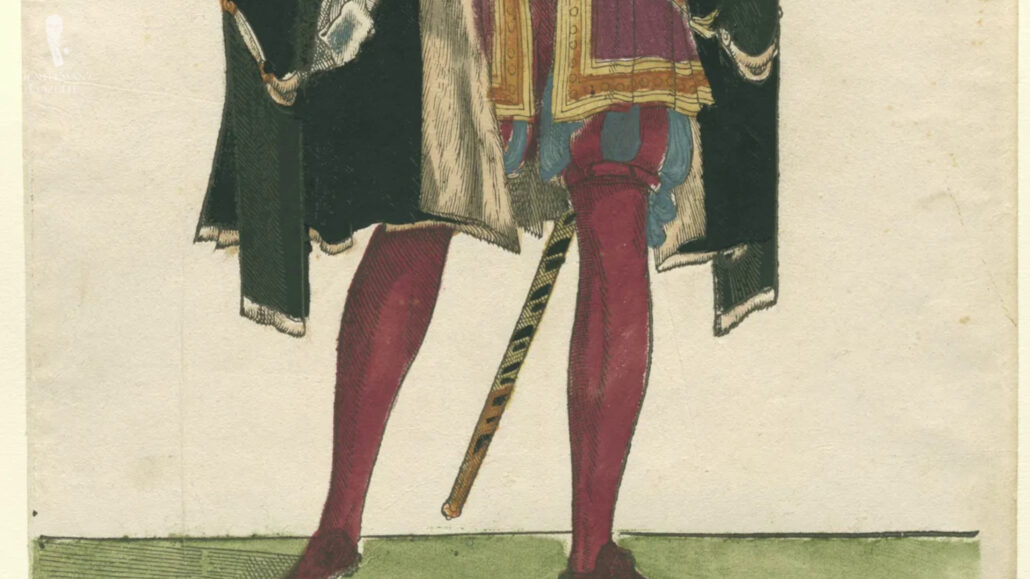
And as the upper hose evolved into breeches to become a more considered garment, the stockings would start to be worn underneath them. And, of course, they would eventually transform into the socks that we all know and love today. And to clear up any doubts, yes, the socks that we sell at Fort Belvedere are knee-high, but please, wear them under your trousers.
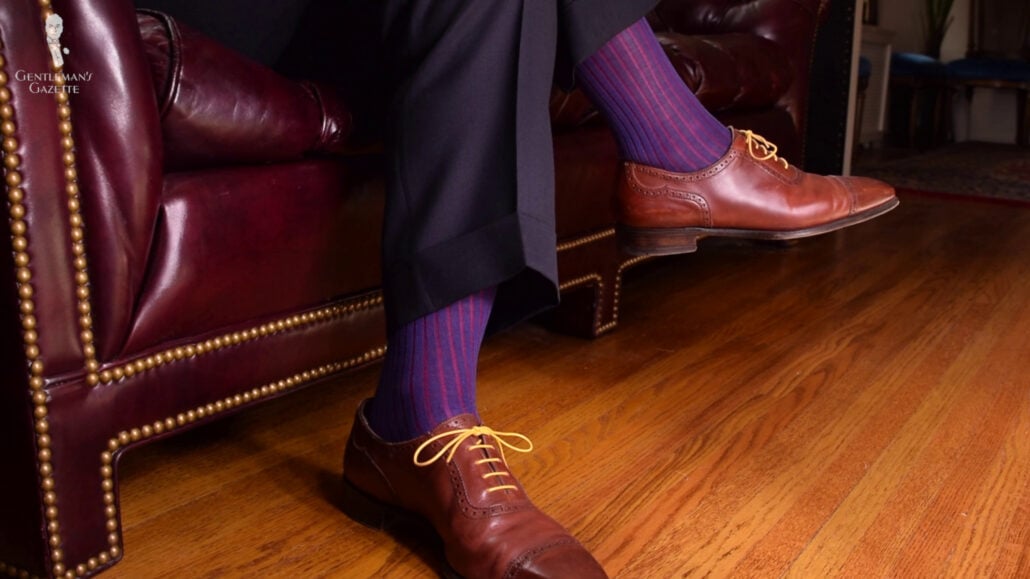
5. Codpieces
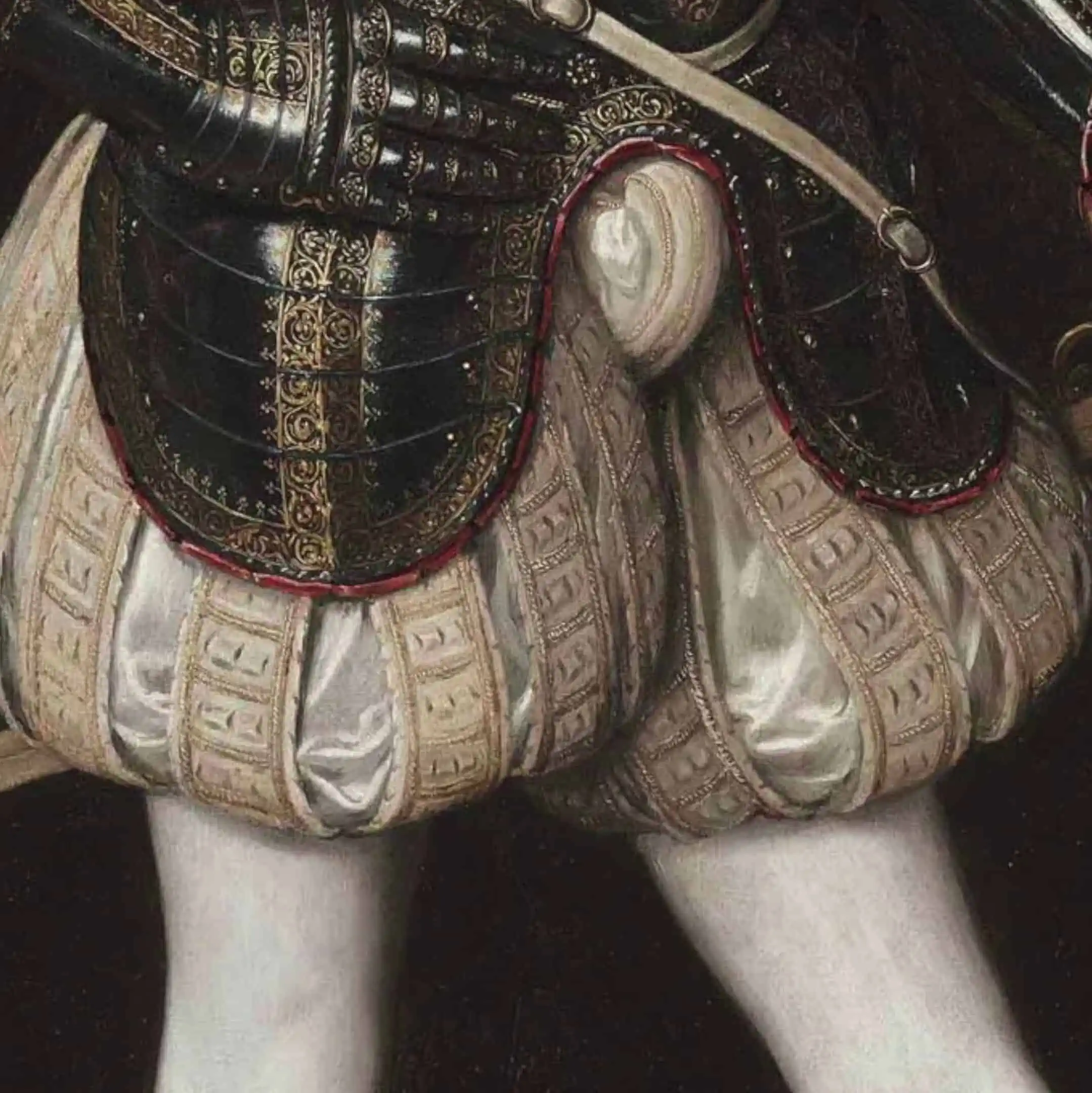
The codpiece was popular in the 15th and 16th centuries and was a form sitting below the belt and between the knees. And before you ask, no, I am absolutely not demonstrating anything in this section of the video. Interestingly, during the period that they were popular, it was actually extremely taboo to talk about intimate anatomy, so why men would walk around drawing attention to this exact area? I have no idea. Still, people would take their codpieces very seriously to denote class and wealth, so they became quite fashionable for around a century.
6. Ruff Collars

Moving swiftly along, we come to the collar that Shakespeare made famous: the ruff collar. These were stiff, linen collars made from fluted frills that surrounded the neck and were often trimmed with lace.
The ruff was popular in the Elizabethan and Jacobian eras, from the mid-16th century to the early-17th century. They were worn by men, women, and children and were primarily about showing off how much money you had. They evolved from shirt collars that were originally attached and drawn with a string, but they became bigger and frillier over time; to the point that they became a separate piece that had to be stiffened with starch.
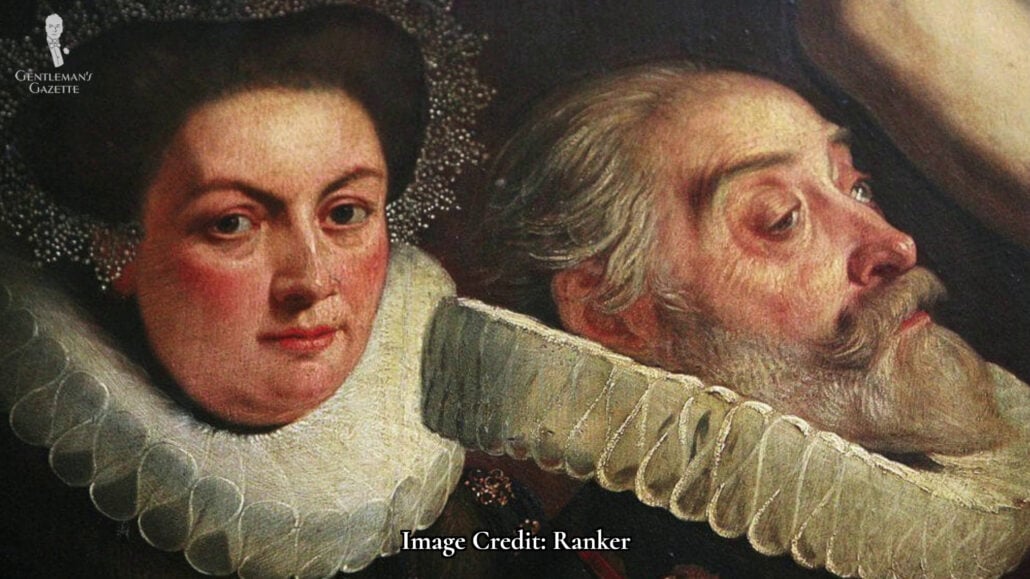
I’m sure you’ll agree that these things are just hilariously impractical, as shackling your neck in place at the beginning of the day isn’t going to get you off to a great start.
I guess what we’re learning here is that size really has always mattered – whether it’s cars, ruff, or codpieces.
7. Powdered Wigs

Our next historical menswear blunder followed this trend of wealthy excess in the form of powdered wigs. Wigs certainly aren’t new as the Ancient Egyptians carefully shaved their heads and then wore wigs to protect them from the sun, and Queen Elizabeth the First had over 150 wigs during her lifetime, but the powdered wig is a trend that we’d just as soon forget.
It began with French King Louis XII and boomed with his son and successor, Louis XIV. A head full of long and luscious locks was seen to denote wealth, status, and class, so Louis commissioned many wigs – or periwigs, as they were then called – to be made for him. Royal fashion trends tended to trickle down to the rest of society, and this one was no different, with wig-wearing spreading throughout Europe and even to America.
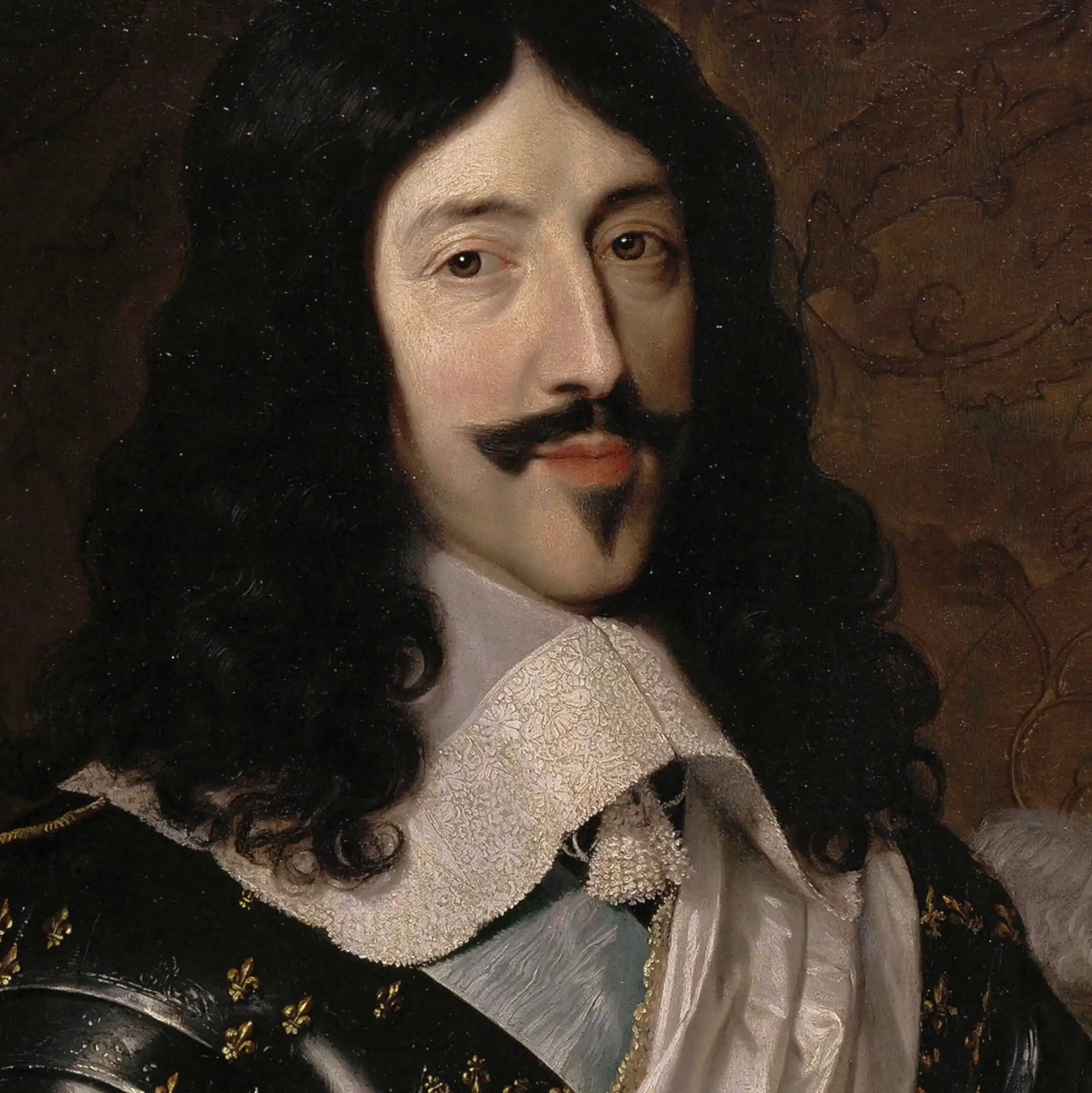
To get rid of the odor that the wigs produced and to stop lice and mites from infesting them, lavender-scented starch was used to powder the wigs. This is what gave them their bluish-gray color. And even if men of the time didn’t wear a wig, they still powdered their own hair to follow the trend.
Here in the 21st century, of course, all of this fuss seems a little over the top, and we’d rather just wear a hat than a powdered wig.
As a side note, if you are looking for ways to deal with hair loss, Raphael can help you out in this guide.
Top 5 Hair Loss Treatments for Men
8. Tie-on Glasses
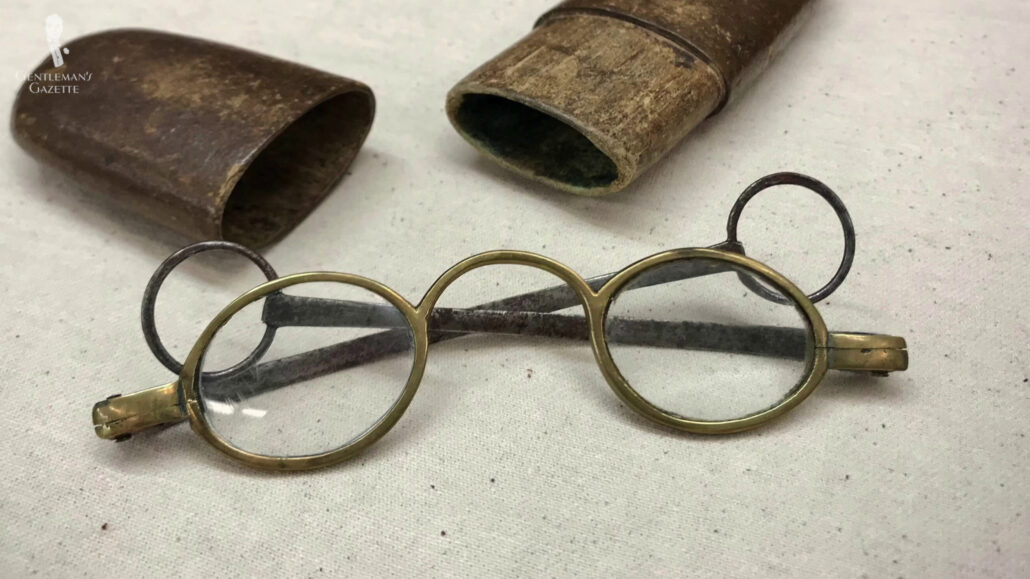
Next on our list is a menswear mistake I probably would have made myself if I were alive in the time of powdered wigs, and that would be tie-on glasses.
In the 1720s, spectacles didn’t have arms that were ergonomically bent to sit easily on the ears. Because I guess that would have just made too much sense. Instead, a piece of ribbon was tied through loops at the ends of the arms that would go around the back of the head and then be secured in a knot.
And because powdered wigs were still all the rage at the time, as well you had to make the choice of whether you wanted to appear stylish by tying your glasses over or under your powdered wig.
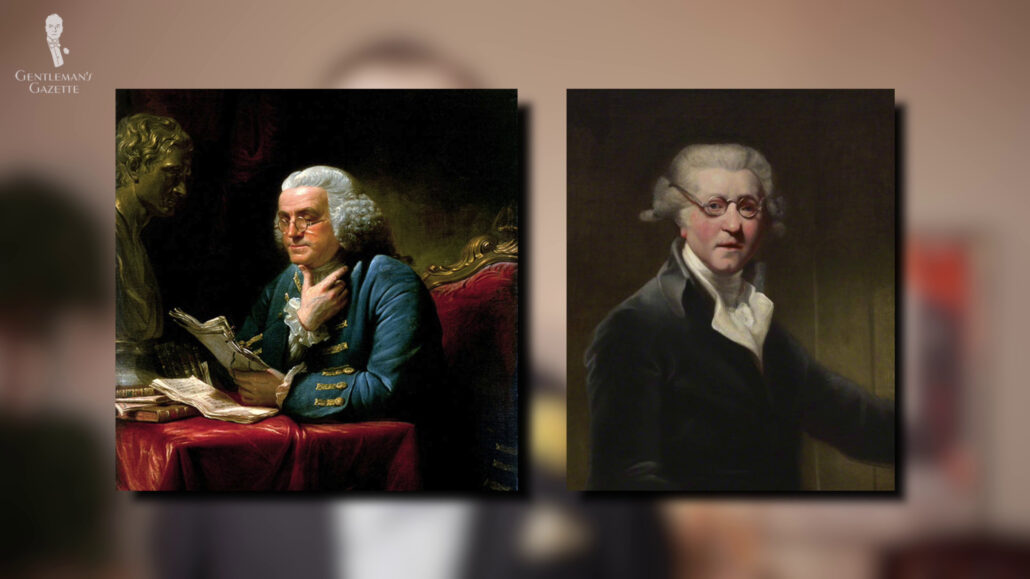
Needless to say, I’m definitely pleased that we don’t have to put up with this one anymore, and that we live in an era of stylish eyewear, where you don’t have to compromise on looks for functionality.
9. Crakows/Poulaines
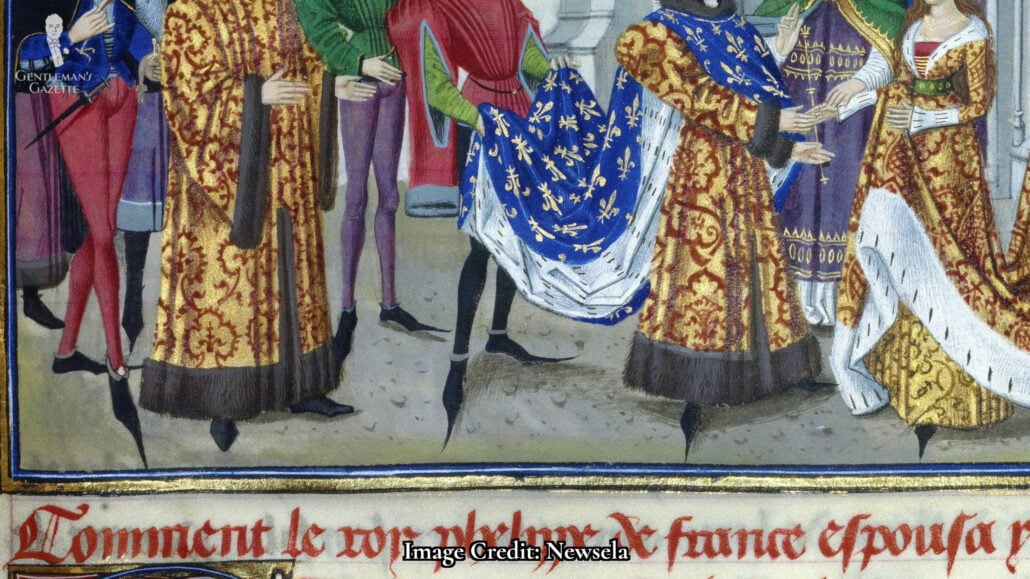
Next on our list today are the famous medieval pointy shoes, known alternatively as either crakows or poulaines.
This shoe style was popular between the 12th and 15th centuries, and they were so-called because it’s believed that they originated in the then-capital of Poland, Krakow. “Poulaine” refers to the French souliers à la poulaine, which translates to “shoes in the Polish style.”
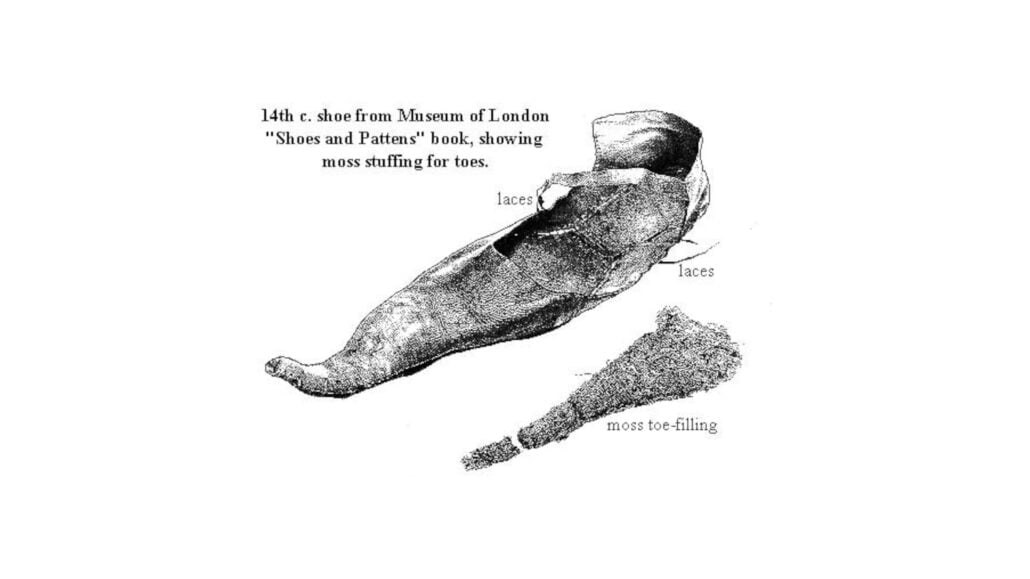
The pointed toes of these otherwise soft shoes could reach impressive lengths up to 50 percent the length of the foot, and the toes were often stuffed to ensure that you could still walk in them.
As far as footwear goes, though, these are famously impractical. During the Battle of Sempach in 1386, the soldiers of the Duke of Austria, Leopold III, were forced to cut off the toes of their poulaine shoes because they wouldn’t allow for good mobility otherwise. This image was immortalized in an illustration of the battle, where the severed tips of the shoes can be seen in the background.
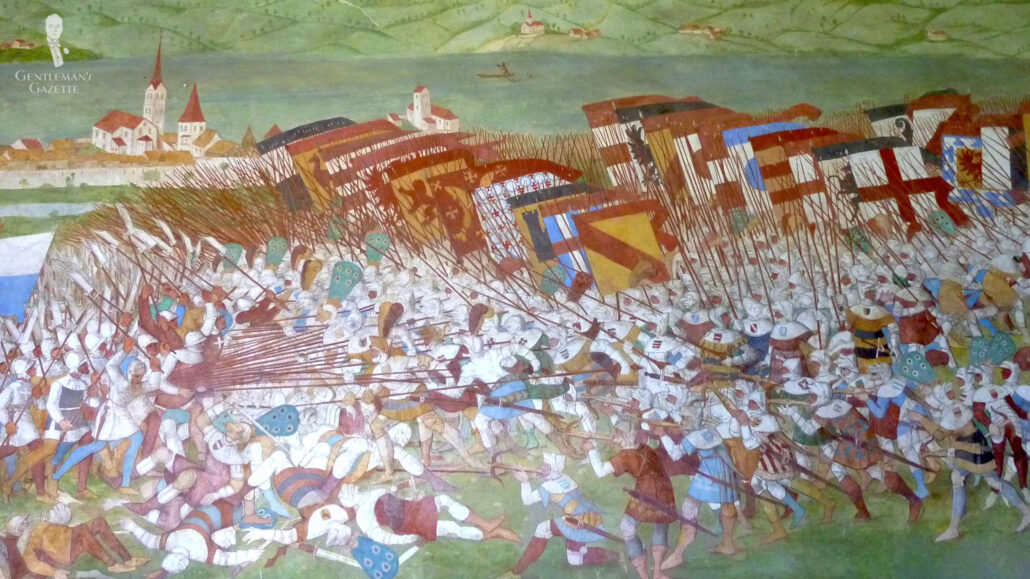
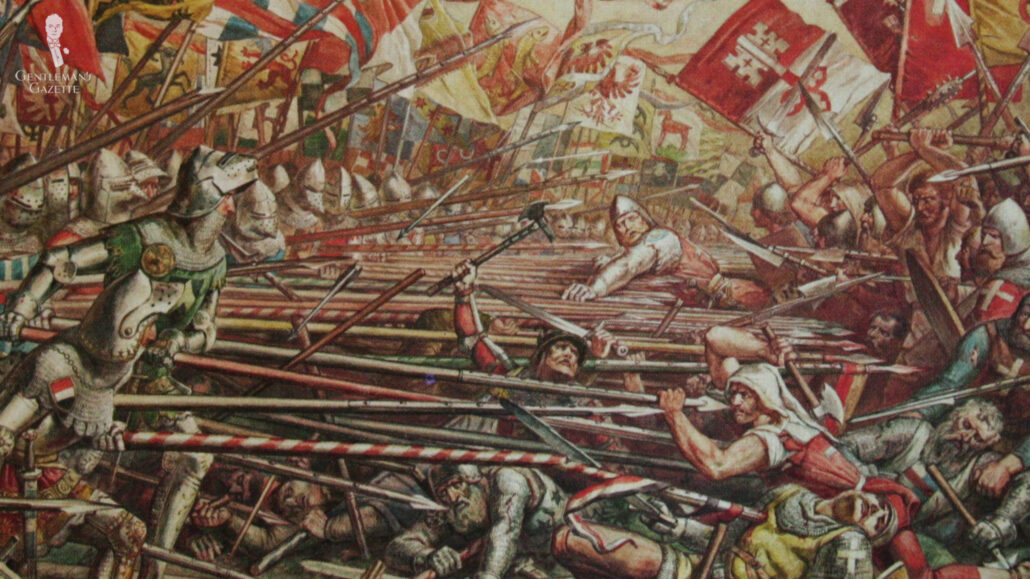
So, when it comes to footwear, it seems as though these soldiers made the right choice by ditching the long-pointed toe and opting for a more modest chiseled toe, even if it was by accident.
10. Shirts As Underwear
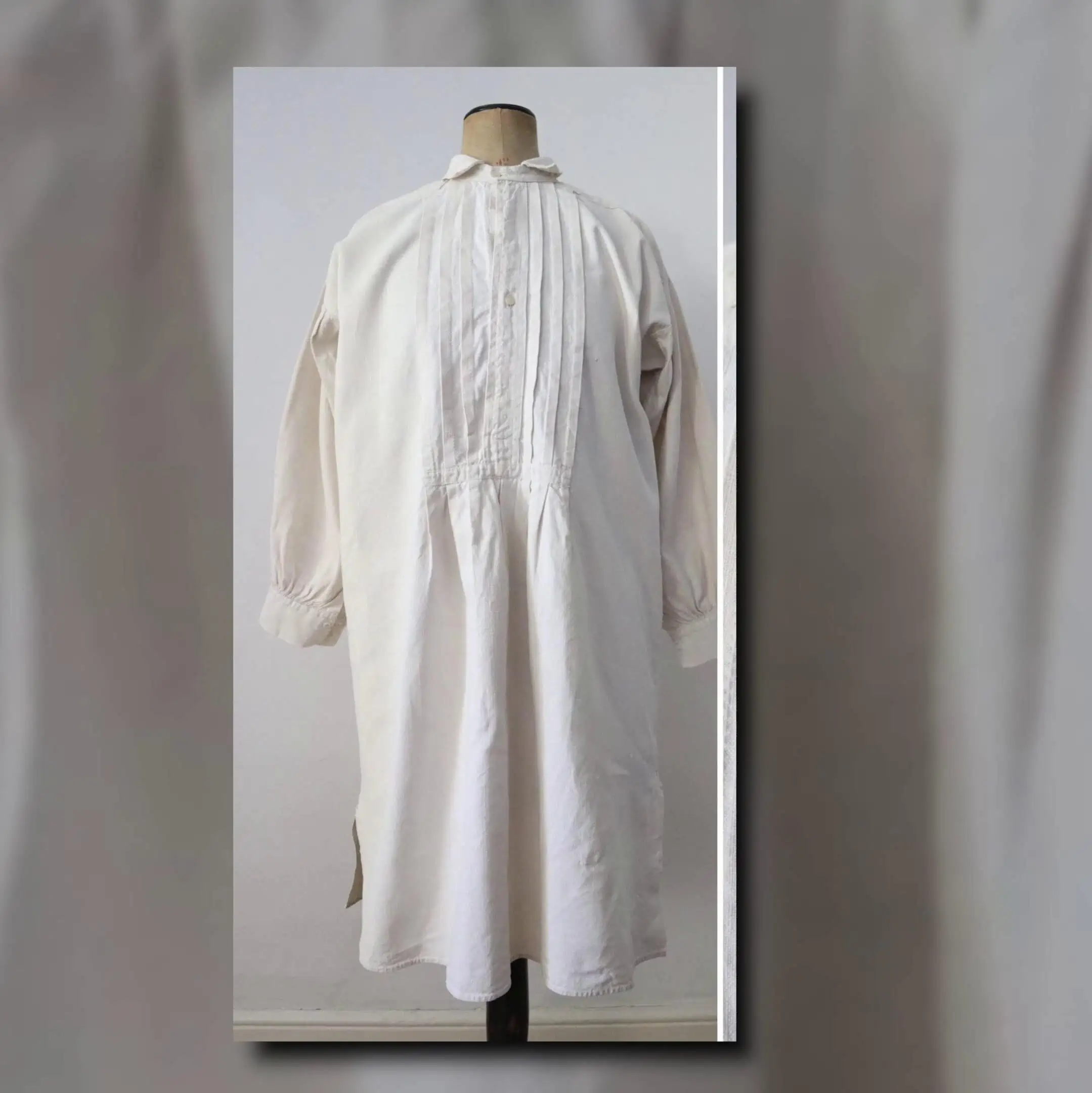
And as our final entry on today’s list, we come to a menswear method, more so than a specific item, and that is the trend of using shirts as underwear.
The modern length of a shirt’s tails is actually around the shortest that they’ve ever been. Shirt tails used to be much longer, reaching to round about the knee or sometimes even past. So, before the age of boxers and briefs, men would simply take these long shirt tails and use them to wrap up their nether regions for an all-in-one shirt undergarment.
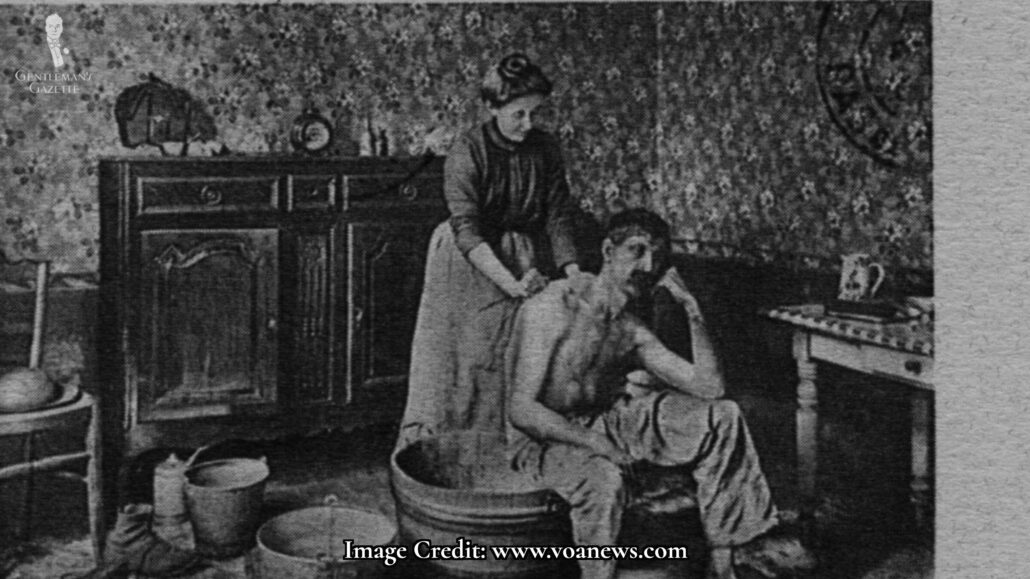
Considering that people back then bathed far less frequently and also washed their clothes far less frequently, the state of their shirts is really grossing me out. To be clear, undergarments, in general, aren’t a new invention, as they’ve existed in some form or another for millennia. And while this shirt hack would have saved on buying separate undergarments or doing additional laundry, there’s no denying that it’s just a little icky.
Conclusion
So, now that we’ve brought this list of menswear fails to a close, you can definitely see that living here in the 21st century, we’re dodging some sartorial bullets. And, of course, it can be gratifying to look back and see how far we’ve come.
But, who knows where we might be in another few hundred years? The key takeaway here, as Yves Saint Laurent famously said, is that “While fashions fade, style is eternal!” And for that, we are certainly thankful.
So, what did you think of today’s list? Were any of these fashion fails that you were previously unaware of, or is there something we missed today? Let us know in the comments below.
Outfit Rundown
Today, I’m wearing an outfit that pays a bit of a subtle tribute to fashions of the past, setting aside the powdered wig. I’m working today with a blue and orange color palette, and the main elements are my two-piece, navy blue suit from Suit Supply, which I’m wearing over a plain light blue French cuffed shirt from Charles Tyrwhitt.
For a bit of historical flair, I’m also wearing an ascot in a bright orange and yellow color scheme with a floral, almost psychedelic pattern. Meanwhile, my shoes are Adelaide Oxfords with a slight amount of broguing in a dark brown shade from the Swedish brand Skolyx.
And the remainder of my wardrobe elements today are all from Fort Belvedere. We’ll start with my two-tone, shadow-striped socks, which are in midnight blue and royal blue to harmonize with my suit as well as my shirt.
My cufflinks are our gold-plated, sterling silver eagle claw models, featuring blue lapis lazuli as the stone. And further reinforcing the orange and yellow color feel, my boutonniere is a peach spray rose, and my pocket square has a yellow body and a slightly bolder yellow x-stitch around the edge.
Of course, you can find all the Fort Belvedere accessories I’m wearing, the wig excluded, in the Fort Belvedere shop.
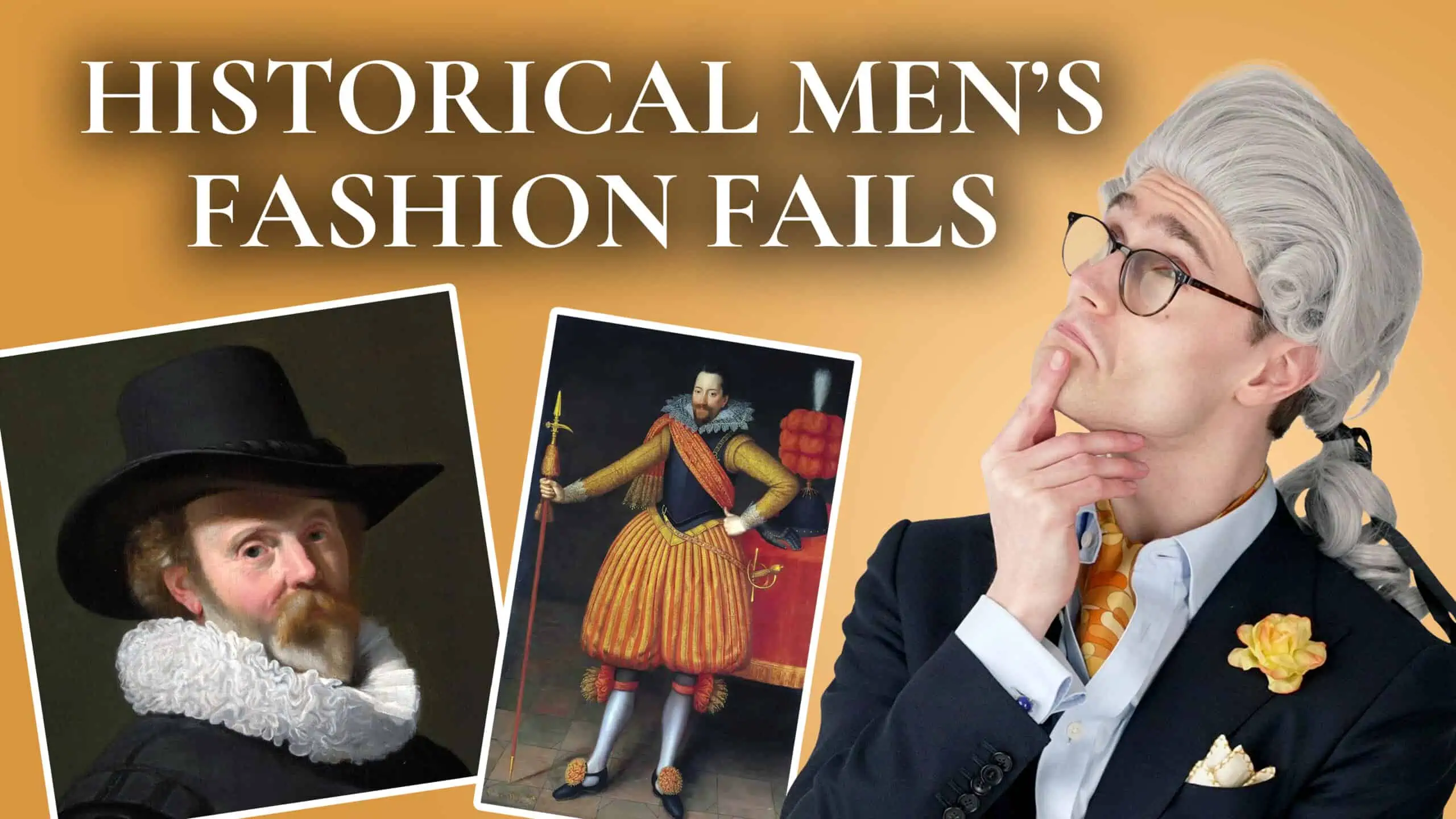
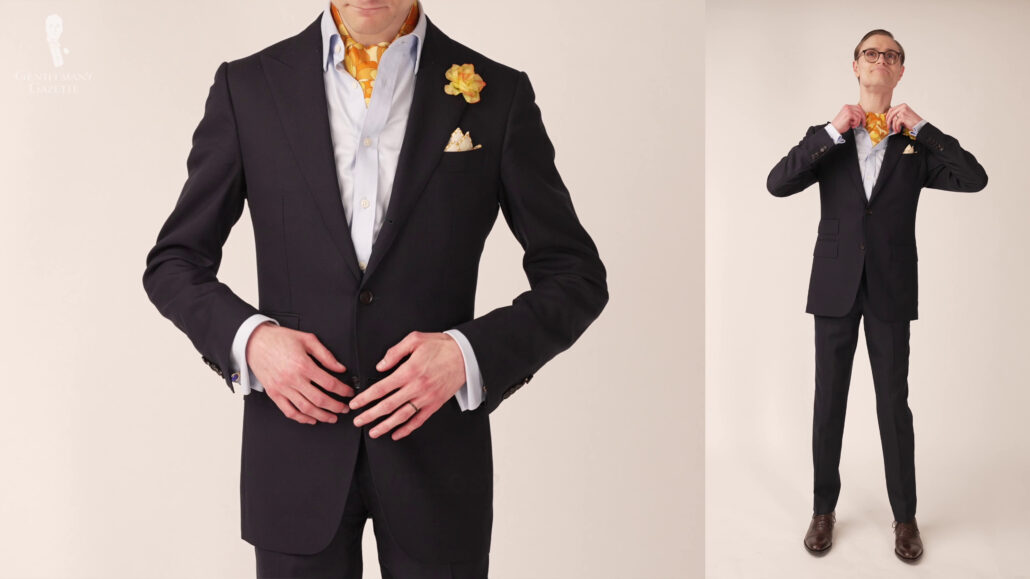
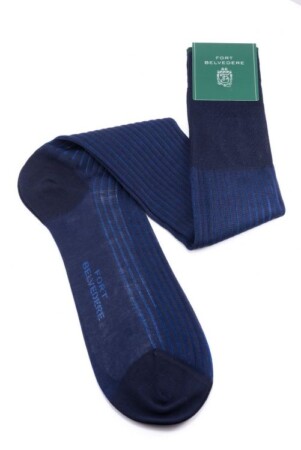
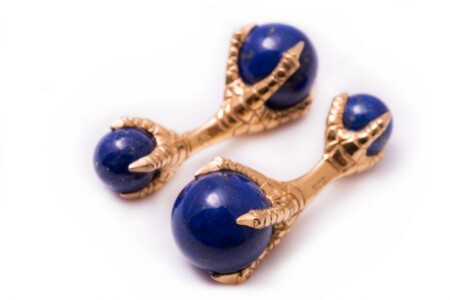
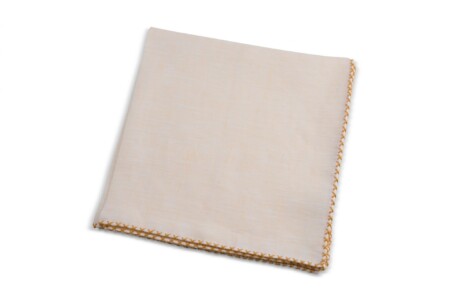
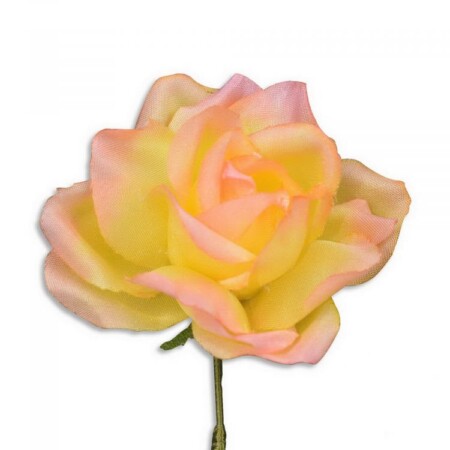
This really is a very good article and I enjoyed the scholarship immensely. The only quibble I had is with the part about shirts. In fact, people in the past did bathe a great deal to the point where it often led to public scandals. As to washing their clothes, true, they didn’t wash their outer garments often, but their shirts and other undergarments were washed regularly. The reason why they wore these long shirts was to protect their outer clothes from sweat and suchlike. For the same reason, men would wear cloaks when out and about and dressing gowns at home.
What a bizarre article. I understand that it seeks to be ‘light hearted’ but I really don’t see how these can be described as ‘mens fashion fails’ as many had usage over hundreds of years as opposed to the relatively short lifespan for the mens classic fashion this blog represents.
In the future, people will find that wearing a tie around your neck and tight form-fitting jacket are fashion fails. In hindsight, what is fashionable is often seen as impractical and silly.
There used to be a group of lawyers in England until the Victorian era called Serjeants at Law who were invested with a coif which they were never obliged to take off or cover even in the presence of the monarch. Serjeants who became judges would cover the coif with a black cap when passing sentence of death. When lawyers and judges began to wear wigs a piece of white cloth was added to the top of the wig to represent the coif
Thanks for the historical rundown! I’ve done a lot of research on this, and you spot on. Men’s fashions evolved often for the same reason women’s fashions did — The people with money or status were always looking for ways to differentiate themselves from the masses. Using scarce or expensive materials lavishly, even if impractical, was often the motivation to push the fashion to ridiculous lengths.
Louis XII was prematurely bald and so started wearing wigs to cover up his thinning hair. That started the whole trend of men wearing wigs that lasted until the end of the 18th century, about a century and a half. Again, one reason they were so popular was that they were not only expensive to buy, but required a lot of maintenance to keep them clean, powdered, and looking good. It was a quick and easy way to identify a “gentleman” from the regular folk.
Thanks for your additions, Randy! Glad to hear you enjoyed the post :)
This video reminds me of a couple of moments in the *Blackadder* series:
(1) On the codpiece: “the Black Russian.” https://www.youtube.com/watch?v=u5A55eWbiBI
(2) On the ruff: “You look like a bird that’s swallowed a plate.” https://youtu.be/klEOETJrUjI?t=61
Also, Preston defining “codpiece” (8:20) could be on *Don’t Be Dirty* (Fry and Laurie), https://www.youtube.com/watch?v=cVe3fTL1cPM.
Greetings,
“Dishonorable Mentions” must go to leisure suits, beltless “double-knit” polyester pants, and distressed jeans.
Best regards,
Andrew Gregg,
Palm Springs, CA.
I was originally told that the codpiece was really meant to carry things like money or in other words the codpiece was a form of early purse for men.